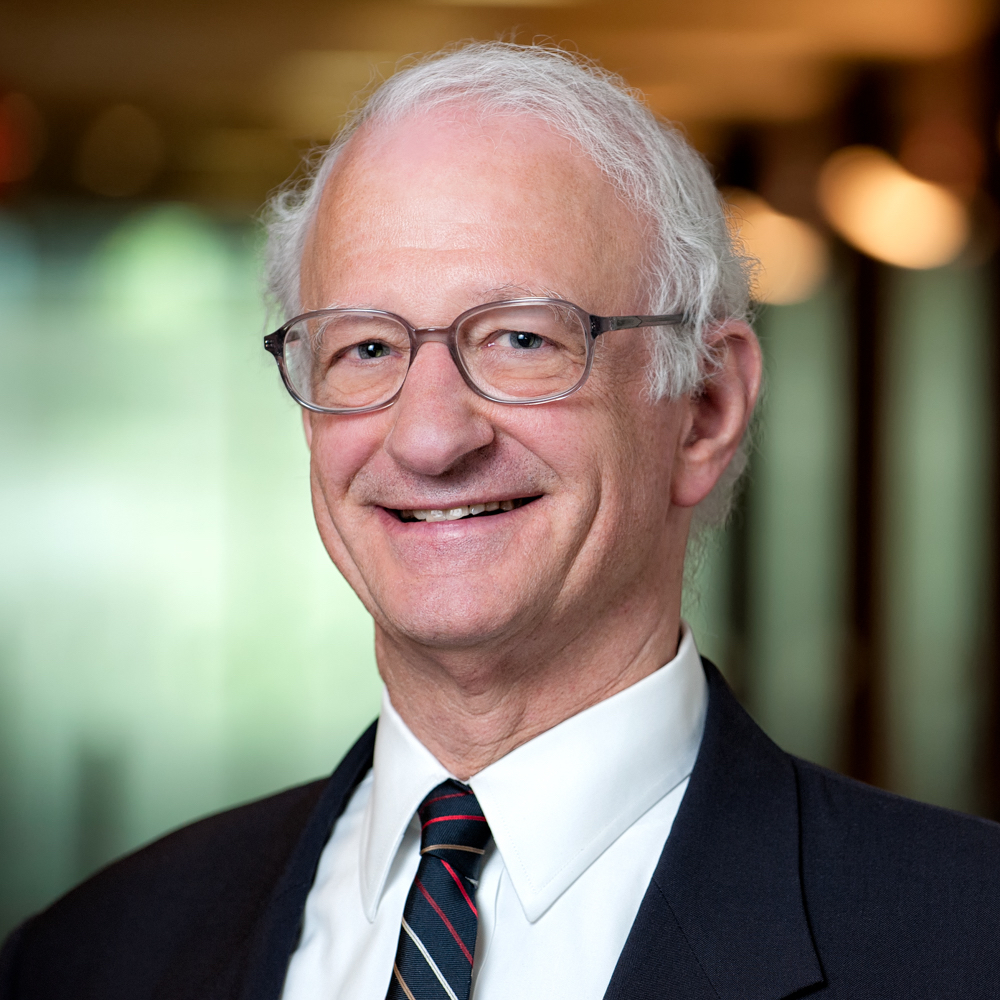

As described under Audit Firm Registration, after raising concerns at what they termed the PCAOB’s extra-territorial reach, non-U.S. firms won a nearly year extension on the registration deadline. However, once the foreign firms were registered, the Board still had to resolve the issue of inspecting those firms.
After visits by several European regulators, PCAOB Chairman McDonough decided to travel to Brussels to meet with his counterparts and negotiate directly with the European Commission. Diplomacy was a familiar path for McDonough, a former Chairman of the Basel Committee on Banking Supervision and State Department officer who spoke fluent French and Spanish. Among the PCAOB staffers who accompanied him were General Counsel Lewis H. Ferguson III, Chief of Staff Samantha Ross, and Senior Counsel to the Chairman for International Affairs Rhonda Schnare Schmidtlein, an accountant and attorney who had worked at the Department of Justice and the U.S. Trade Representative.
At the EC, McDonough personally brokered a deal that would allow the PCAOB to develop a sliding scale on which to rely on home country regulators to inspect audit firms. The scale would depend on the foreign watchdog’s rigor and independence. Ross and Schmidtlein helped formulate the key idea of conducting joint inspections with foreign regulators at the outset. Before any of this could happen, the PCAOB had to negotiate individually tailored agreements with each jurisdiction.
“What we were asking to do in non-U.S. jurisdictions - send our inspectors to talk to auditors and look at confidential work papers - had never been done before,” said Schmidtlein who became the first Director of the Office of International Affairs when it was created in 2005. “The only analogy that we could draw on was to describe food inspectors coming to check plants for the Food and Drug Administration or the Department of Agriculture.”
Under the Act, the PCAOB could not share information with its foreign counterparts. A provision in the Dodd-Frank Wall Street Reform and Consumer Protection Act of 2010 eventually remedied that.
Because many U.S. mutual funds and investment advisors were pushing investments in the emerging markets of the so-called “BRIC countries,” the PCAOB sought to conduct inspections in Brazil, Russia, India and China.
“We wanted to get into those markets in order to look at what was underlying the financial disclosures, but the country we could never reach an agreement with was China,” said Schmidtlein. To this day, China blocks PCAOB inspections. (For more information, see Lack of Access in China)
In 2007, the PCAOB joined the new International Forum of Independent Audit Regulators (IFIAR) that had been established by audit watchdogs from 18 jurisdictions the year before. PCAOB board members and staff have served in leadership positions at IFIAR for the last decade.
By the end of 2017, there were more than 900 non-U.S. audit firms in 84 countries registered with the PCAOB. The Office of International Affairs team had negotiated agreements with and was conducting inspections in 50 non-U.S. jurisdictions
In 2007, Schmidtlein and her team conceived and established the PCAOB’s International Institute to provide non-U.S. regulators the opportunity to learn about the PCAOB’s approach to auditor oversight. “We wanted to increase our cooperation in an authentic way and make sure that line inspectors from all over the world were on the same page,” she said. The two-and-a-half day program provided technical sessions on auditing standards and inspection approaches. The participants would also get a chance to meet and make connections with PCAOB inspectors who would also attend. By 2015, independent audit oversight around the world had progressed to such a degree that the focus of the Institute was changed to promote thought leadership and discuss key advancements and emerging trends in global audit oversight. There is still a pre-Institute session that takes place before the meeting that offers basic inspection information for newer regulators.
From the beginning, the Board believed that it could create a powerful research program that could capitalize on the public and private information it was gathering. Also, the Board wanted its research office to support the Inspection Division’s risk-based approach by identifying audits for review that were likely to pose the most challenging issues.
The PCAOB’s first research effort began in July 2004, as the Office of Financial Analysis and Risk Assessment (OFARA) headed by forensic accountant Richard D. Clark. Its goal was to provide the Board with risk assessments and related insights.
As Board member Charley Niemeier described, OFARA was established to create predictive tools that could both track audit issues and forecast where future problems might develop. In September 2005, he led the Board’s establishment of the Office of Research and Analysis (ORA) by merging a risk analysis group within Inspections and OFARA. Phil Wedemeyer was selected to head the group that included about 18 auditors and economists.
“One of my crown jewels was the creation of the Office of Research and Analysis,” said Niemeier. “It wasn’t in the statute, and I had to fight in order to get it included in the budget.”
“We realized that by compiling and analyzing inspection results over time, we would have data that nobody ever had before,” said Wedemeyer. “We wanted to use this confidential and public data to build a risk model that would provide some insight into the root causes of audit failure.”
ORA also conducted research into new topics that were constantly surfacing including emerging financial instruments and backdating stock options.
As well, ORA helped the Office of the Chief Auditor to produce Staff Audit Practice Alerts, highlighting “new, emerging or otherwise noteworthy circumstances that affect how auditors conduct audits under the existing requirements of PCAOB standards and relevant laws.” (1) In response to another corporate scandal involving the backdating of stock options issued by companies to their executives and board members, Wedemeyer’s team helped research and write Audit Practice Alert No. 1 on Timing and Accounting for Option Grants published on July 28, 2006. The PCAOB produced 15 Staff Audit Practice Alerts through 2017.
In May 2017, the PCAOB merged ORA and the Center for Economic Analysis, which was founded in 2014 to apply economic and other types of analysis to the Board’s functions.The merged entity, called the Office of Economic and Risk Analysis, focuses on conducting economic analysis to inform standard setting and post-implementation reviews of previously adopted rules and standards.
In an effort to acquaint small businesses and their auditors with the new corporate rules under SOX and the oversight of the PCAOB, Chairman Bill McDonough tapped Board Member Kayla Gillan to develop an outreach program for smaller registered firms across the country. Each two-day forum on Auditing in the Small Business Environment was hosted by a Board Member and featured Inspections and Standards staff who would explain the inspection process and the impact of new auditing standards.
“We viewed it as conducting missionary and educational outreach for the PCAOB,” said Gillan. The first Small Business Forum was held Dec. 1, 2004.
In 2011, after the Dodd-Frank Act gave the PCAOB oversight responsibilities over auditors of broker-dealers, the PCAOB created similar Forums for Auditors of Broker-Dealers. The one-day seminars were patterned after the Auditing in the Small Business Environment programs, but also included staff from the SEC and FINRA. The first of these occurred on Oct. 28, 2011.

To ensure that the PCAOB’s statutory mission to protect the interest of investors was fulfilled, Board Member Steven B. Harris urged the Board to establish an Investor Advisory Group in July 2009 shortly after he arrived. Harris had been Sen. Sarbanes’ Staff Director and Chief Counsel of the Senate Banking Committee during the consideration of the Sarbanes-Oxley Act.
According to Harris’ Special Advisor Joanne O’Rourke Hindman, IAG members took the lead on selecting topics and developing presentations for each meeting, and prompted the PCAOB to focus on such areas as the auditor's reporting model and engagement partner signature. The first Investor Advisory Group meeting was held May 4, 2010.

The PCAOB’s unwieldy name is often a source of confusion. Drafters of the Sarbanes bill used the more generic phrase “public company accounting” rather than the specific term “auditing” to name the regulator. Oxley’s original bill simply referred to “a public regulatory organization.”
Before the PCAOB even opened its doors, journalists and critics had dubbed it “Peekaboo,” presumably referring to its inspection power. (2) Chairman Bill McDonough tried to popularize the term “P-COB” but that did not resonate. The Board was initially prevented from using the website address www.pcaob.org because an enterprising accountant in Southern California had registered it shortly after SOX was passed. (3)
For several years, the Board fielded a staff softball team started by Enforcement Director Claudius Modesti known as the PCAOB SOX. With their clever name and red-stocking logo, they often won accolades but not games.
(1) Staff Audit Practice Alert No. 1, “Matters Related to Timing and Accounting for Option Grants,” July 28, 2006.
(2) Wall Street Journal, “Accounting Board Tackles Its Mission Amid initial Laughs,” by Judith Burns, Jan 7, 2003.
(3) Forbes, “The Auditing Industry Plays Peekaboo,” June 12, 2003